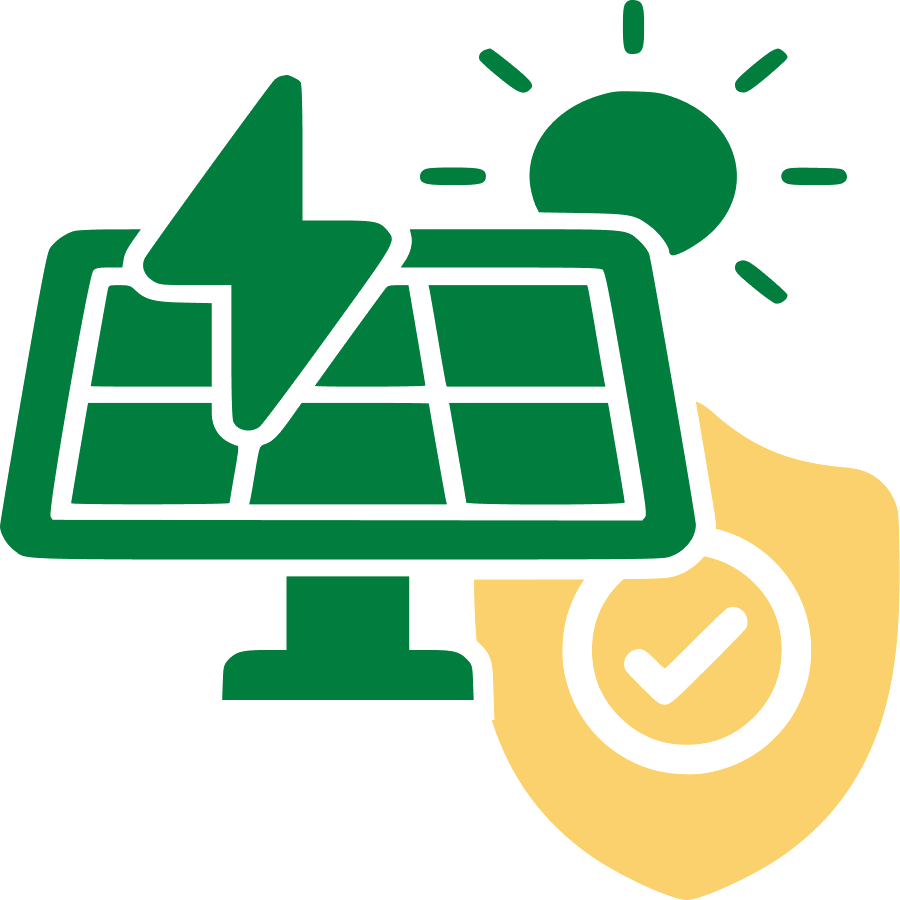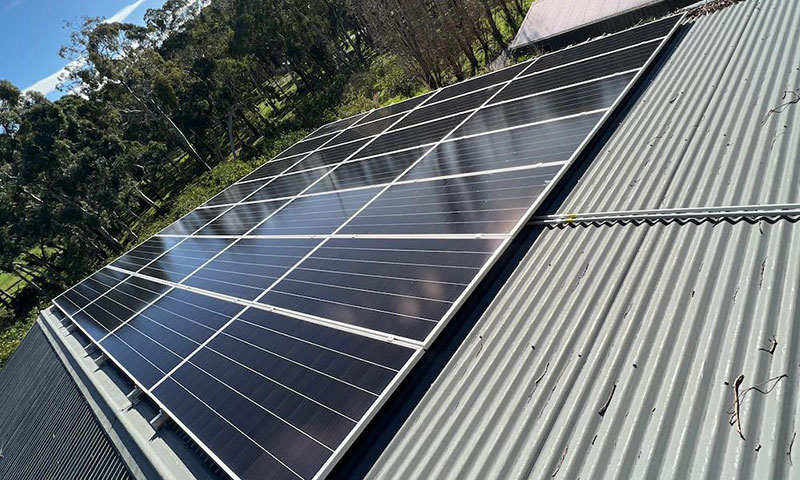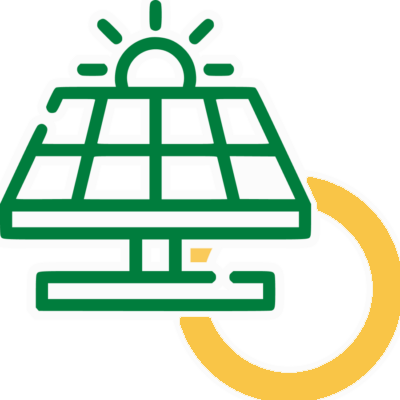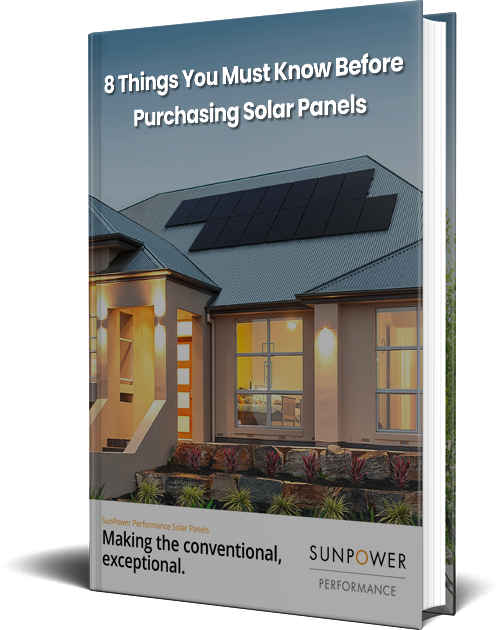
40 Year Warranty
We are Sunpower’s preferred installer, renowned for their industry-leading efficiency.

Guaranteed No Slavery Panels
Ethically and responsibly sourced supply chain.

Turbocharged Solar
Greater solar savings with Energy Buster is smarter approach.
Solar Systems
Enjoy an annual return of up to $6,000 with a reliable 15kW solar system.
High levels of energy consumption require a powerful solar system to match.
With an average daily output of around 60-75 kWh, a 15kW system is ideal for larger homes or small businesses that want durability and energy production without worrying whether there’s enough power to last.
A 15kW system typically consists of around 45-55 solar panels, depending on their wattage. Helping control and limit high energy bills, these systems can generate significant electricity, reducing your reliance on the grid and potentially allowing you to earn credits through the feed-in tariff scheme.
By investing in solar, you can enjoy long-term savings, decrease your carbon footprint, and contribute to a greener future.

What are the best types of 15kW solar systems?
Monocrystalline Panels: These panels are known for their high efficiency and sleek appearance. They are made from a single crystal structure, allowing them to convert sunlight into electricity more efficiently than other panel types.
Polycrystalline Panels: Polycrystalline panels are slightly less efficient than monocrystalline panels but offer a more affordable option. They are made from multiple crystal structures and have a distinctive blue colour.
Hybrid Panels: Hybrid panels combine photovoltaic (PV) solar cells with solar thermal collectors, allowing them to generate both electricity and heat. This makes them a suitable choice for those looking to maximize energy production and utilize solar power for heating purposes.
Micro-Inverter Systems: Instead of a single inverter for the entire solar array, micro-inverter systems have individual inverters for each solar panel. This improves system performance, especially in scenarios where some panels may be shaded or experiencing different levels of sunlight.
Battery Storage Systems: Adding battery storage allows you to store excess electricity generated during the day for use during the evening or when the sun isn’t shining. This enhances self-consumption and provides backup power during grid outages.
Ultimately, the best type for you will depend on your specific requirements, budget, and preferences. Consult with a member of the Energy Buster team for help determining the most suitable option for your needs.
How much does a 15kW solar system cost?
The cost can vary depending on several factors, including the brand, quality of components, installation complexity, and any additional features or upgrades. On average, you can expect the cost to range from around $20,000 to $30,000, including installation.
It’s important to note that this is a rough estimate, and prices may vary. Additionally, government incentives and rebates, such as federal solar tax credits or state-specific schemes, can help offset the upfront cost of the system, reducing the overall investment.

15kW solar system benefits
✔ Reduced Electricity Bills: You can generate a significant amount of electricity, which can greatly reduce or even eliminate your reliance on the grid. This translates into substantial savings on your electricity bills over the system’s lifespan.
✔ Return on Investment: Investing in solar power allows you to take advantage of long-term financial benefits. The savings on your electricity bills, combined with any feed-in-tariff credits you may earn for excess energy exported to the grid, can provide a solid return on your investment.
✔ Environmental Impact: Solar power is a clean and renewable energy source that produces no greenhouse gas emissions during operation. You can significantly reduce your carbon footprint, contribute to a cleaner environment, and help combat climate change.
✔ Energy Independence: Generating your own electricity grants you greater energy independence. You become less reliant on traditional energy sources and more self-sufficient, ensuring a consistent power supply and reducing vulnerability to utility price fluctuations.
✔ Government Incentives: In Australia, various government incentives and rebates are available to support the adoption of solar energy. These incentives can help offset the upfront cost, making it a more financially viable option.
✔ Increased Property Value: Solar cells are considered an attractive feature for potential homebuyers. It can increase the value of your property, making it a wise investment for both financial and resale purposes.
What is the installation process for a 15kW solar system?
The installation process for a 15kW solar system typically involves the following steps:
Step One: Initial Consultation
Contact a reputable solar installation company in Adelaide to schedule an initial consultation. During this stage, they will assess your property’s suitability for solar installation, discuss your energy needs and goals, and provide a preliminary system design.
Step Two: Site Assessment
A site visit will be conducted to evaluate the available roof space, shading issues, roof condition, and electrical infrastructure. This assessment helps determine the optimal placement of the panels and any additional equipment such as inverters and meters.
Step Three: System Design and Quotation
Based on the site assessment, the solar company will create a detailed system design, including the number of the panels, positioning, and electrical components required. They will provide you with a quotation outlining the cost and specifications.
Step Four: Permitting and Approvals
The solar installation company will handle the necessary paperwork and obtain any permits or approvals required for the installation. This may include submitting applications to your local council or utility company.
Step Five: Installation Day
On the scheduled installation day, the solar installers will arrive with the necessary equipment and materials. They will mount the panels on your roof, install the inverters, connect the wiring, and set up the monitoring system.
Step Six: Electrical Connection
Once the panels are installed, a licensed electrician will connect the system to your electrical panel, ensuring it is safely integrated with your home’s electrical system. They will also install a bi-directional meter to measure the electricity exported to the grid.
Step Seven: Testing and Commission
The installed system will undergo thorough testing to ensure proper functionality and safety. This includes checking the electrical connections, verifying panel performance, and testing the inverters.
Step Eight: Grid Connection and Utility Approval
After the system passes all inspections and tests, your solar installer will coordinate with your utility company to finalise the grid connection and obtain the necessary approvals for solar energy export.
Step Nine: System Handover and Customer Education
Once everything is completed, the solar installation company will provide you with a comprehensive handover, explaining how to monitor and maintain your solar system. They will also assist with registering for any available feed-in tariff schemes.

 40 Year Warranty
40 Year Warranty











































